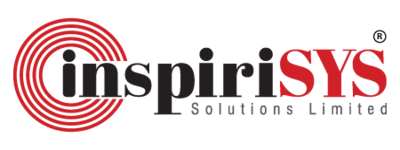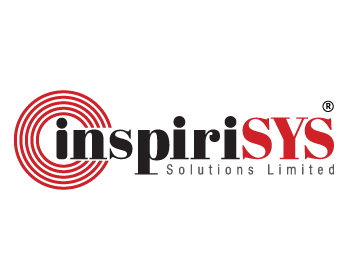What is FaaS?
Function as a Service (FaaS) is a serverless cloud computing framework that allows developers to execute code in small, modular components, often referred to as microservices. With FaaS, developers can focus on building and running individual functions without worrying about infrastructure, while the cloud provider manages the underlying hardware, virtual machines and server software. This approach enables faster development and testing cycles by eliminating the complexities of managing in-house infrastructure.
Introduced in 2014 by startups like hook.io, FaaS quickly gained traction, with major cloud providers like Google, AWS, and Microsoft offering solutions such as Google Cloud Functions, AWS Lambda and Azure Functions.
How does Function-as-a-Service work?
In a Function-as-a-Service (FaaS) model, code is executed as standalone functions triggered by specific events. When an event occurs, the cloud provider dynamically allocates resources, runs the function, and releases the resources immediately after execution. This approach ensures efficient resource utilization compared to traditional setups with always-on servers.
FaaS is particularly useful for tasks such as scheduling, handling web requests and processing queue messages. It executes functions on-demand, allowing developers to improve code while the cloud provider delivers secure and scalable infrastructure.
The event-driven nature of FaaS makes it highly adaptable, as functions activate only when triggered by actions like HTTP requests or database changes. This ensures resources are used efficiently, aligning with variable workloads.
Additionally, FaaS operates on a pay-per-use pricing model, where organizations are billed only for the actual time a function runs. This approach minimizes costs and is especially beneficial for applications with unpredictable demands, making FaaS both cost-effective and resource-efficient.
Key Takeaways
- Automatic scaling in FaaS accommodates fluctuating workloads while charging only for the actual compute time used.
- Developers can solely focus on writing code as FaaS removes the burden of server management, accelerating development cycles and productivity.
- A variety of tasks, such as real-time file processing and IoT data stream analysis, make FaaS ideal for backend operations in mobile and web apps.
How does FaaS Integrate with SaaS, PaaS, and IaaS?
Function as a Service (FaaS) plays a pivotal role in the cloud computing ecosystem, complementing Software as a Service (SaaS), Platform as a Service (PaaS), and Infrastructure as a Service (IaaS). Understanding how these models interconnect can help organizations leverage their strengths effectively.
- SaaS Integration
FaaS enhances SaaS applications by enabling custom functionalities that respond to specific events within those applications. For instance, a SaaS application can utilize FaaS to process data in real-time, generate reports, or automate workflows triggered by user interactions. This flexibility allows businesses to tailor SaaS solutions to their needs without dealing with infrastructure management.
- PaaS Development Streamlining
While PaaS provides developers with a platform to build, test and deploy applications, FaaS enhances it by enabling the creation of lightweight, on-demand microservices, within a PaaS environment. This gives more control over application architecture, enabling them to focus on individual components without worrying about the underlying infrastructure. Together, FaaS and PaaS facilitate rapid development cycles and seamless integration of new features.
- IaaS Simplification
FaaS complements IaaS by abstracting server management complexities. In an IaaS environment, users are responsible for managing virtual machines, networks and storage. By integrating FaaS, organizations can offload certain tasks, running functions directly in response to events, all while utilizing the existing infrastructure . This synergy allows for greater flexibility and optimize resources, enabling users to scale their compute resources dynamically without the need for direct server management.
FaaS is a crucial component of the cloud computing landscape, fitting seamlessly within the realms of SaaS, PaaS and IaaS. Understanding these interactions, allow organizations to build effective and scalable applications that meet their unique needs. Together, these models empower developers and businesses to innovate faster, optimize costs and enhance overall operational performance.
Factors to Evaluate When Choosing FaaS
FaaS is versatile and can support a range of applications such as web development, data processing, online chatbots, and backend operations. When choosing a FaaS provider, it's important to consider the following factors:
- Workloads
- Control
- Vendor Lock-In
- Integration Capabilities
- Pricing Model
For tasks that are straightforward and repetitive, FaaS proves highly effective, particularly when workloads vary or remain low in volume. Since FaaS typically charges based on function execution, costs can escalate for high-usage scenarios compared to a PaaS solution. However, for lighter workloads, FaaS can streamline provisioning and provide cost savings.
Given its high level of abstraction, FaaS restricts user control over configurations and infrastructure. Before selecting FaaS, teams should assess their specific control requirements. PaaS provides more flexibility for those seeking a balance between usability and control. On the other hand, IaaS grants complete authority over production environments, including infrastructure design, catering to teams that prioritize customization.
Applications developed with specific providers can be difficult to migrate. Opting for open-source cloud solutions facilitates smoother transitions when moving computing operations between different providers.
Effective integration with existing tools, systems, and workflows enhances developer productivity and simplifies cloud operations. Evaluating the FaaS provider’s compatibility ensures seamless adoption.
The pricing structure of the FaaS provider includes free tiers, usage-based charges, and pay-as-you-go options. Cost variations during peak demand periods should also be considered. Ensure the model fits your usage patterns and budget.
Key Terms
Function
A single piece of code designed to perform a specific task within the FaaS architecture.
Service Orchestration
The coordination and management of multiple functions and services to achieve complex workflows in a cloud environment.
Development Cycle
The series of stages in software development from conception to deployment, which can be expedited through the use of FaaS.





